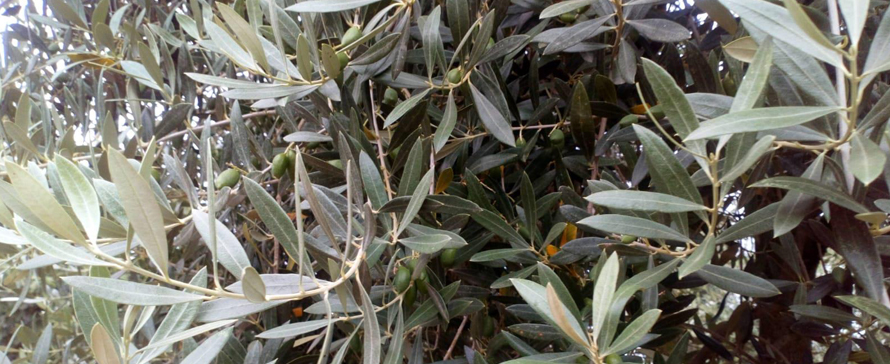Listen to this article
Phosphorous
Phosphorous is involved in the reactions that need metabolic energy, such as sprouting, growth, fruit setting and maturation. Low leaf levels of phosphorous produces short sprouts and leaves, low levels of set fruit, and in extreme cases, defoliation.
Phosphorous is absorbed through the roots especially around the time of sprouting, but it is used during almost the entire cycle.
Therefore, the application of phosphorous fertilizer to the soil should allow for its absorption in spring, while the folior supplies are applied during the whole year.
Potassium
Potassium is involved in the accumulation of dry matter, both in plant and reproductive structures, in the regulation of opening and closing of the stomata.
It is the nutrient that the olive tree needs the most units of, mainly because it is involved in the accumulation of dry matter, and especially of oil in the olives: mature olives are the main users of potassium in an olive tree.
Therefore, it is highly involved in the harvest of olives and in the alternating bearing years of olive trees, because after a voluminous harvest is it likely that the level of potassium in the leaves decreases, thus drastically reducing the following harvest.
Potassium is absorbed through the soil during the whole year, with the highest absorption occuring between the hardening of the pit and veraison. The most intense needs for potassium occur around veraison, so we might think that with supplies to the roots the fruit is well nourished and there won't be a loss of levels in the leaves.
However, in dry irrigation groves, during the time when the root needs to absorb the potassium, the soil is typically very dry, so the fruit consumes potassium from the reserves.
With low levels of potassium, neither sprouts nor leaves nor olives can accumulate all the dry material that they should, and they end up being smaller. A deficit of potassium provokes physiological dehydration, and the leaves will have little turgitidy and tend to be dry at the points and edges and fall off. The fruit tends to wrinkle and stay small and have little oil. The tree will also be more susceptible to plague, disease, cold and drought.
With good levels of potassium, the plant growth creates large leaves and sprouts, and hence, large fruits rich in oil. Olive trees will be better able to withstand drought and heat.
For more insights into optimizing your olive tree's nutrition, explore our article covering the importance of maximizing light exposure for olive tree leaves.
.png)




